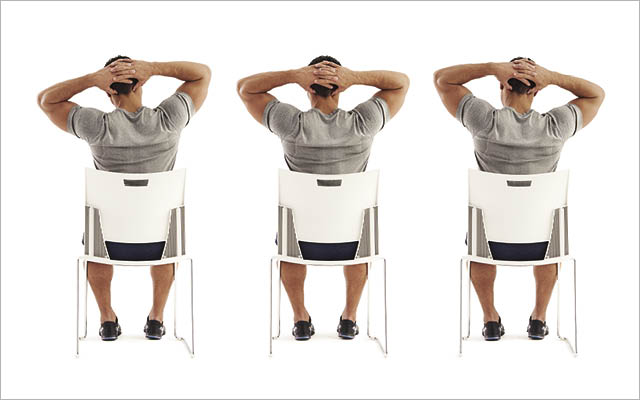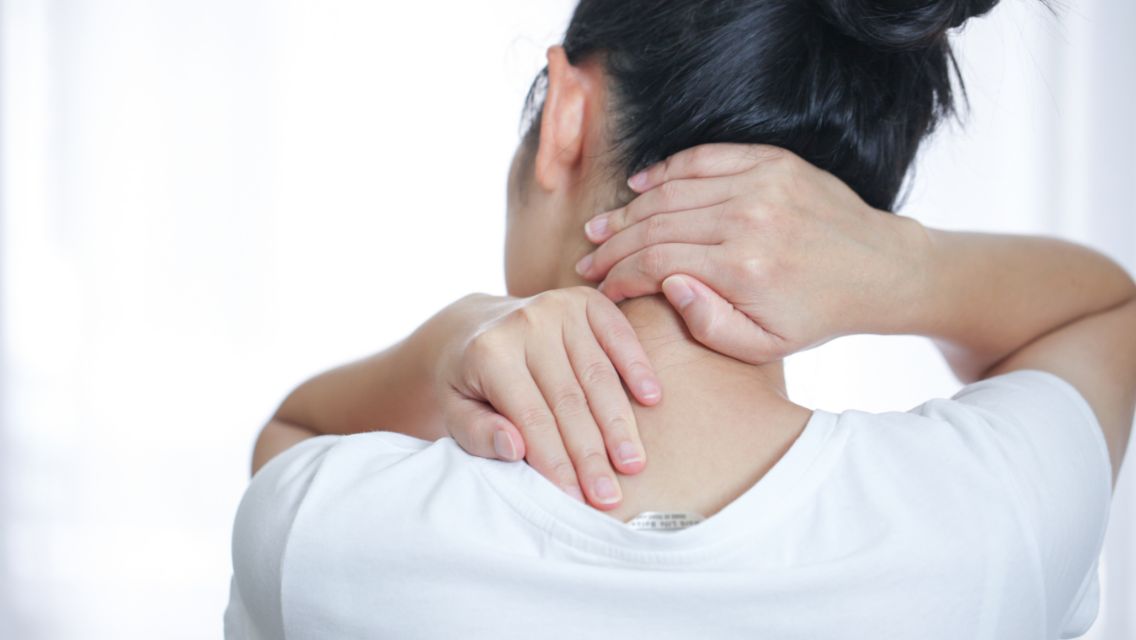Headaches are extremely common — research reports that the condition affects 52 percent of the global population, according to The Journal of Headache and Pain, and that each day roughly 15 percent of people experience headaches.
Those who endure headaches may notice the pain can occur in several different parts of the head. But did you know that this can be a clue in figuring out the actual cause of your headache? Locating the pain may help you understand why your head hurts, which can also be a first step to finding relief.
Let’s explore some common areas of the head where headaches surface and what they mean.
1. Pain in Your Entire Head
When a headache surrounds your entire head, it may feel like you’re wearing a way-too-tight hat or headband. This sensation is a common symptom of a tension headache — which is the most prevalent type of headache.
A tension headache causes pressure-like, dull pain that can feel mild to moderate. You may feel it around the back of your head, temples, and forehead too, and it can lead to pain and pressure in your neck.
Common Causes of Tension Headaches
Stress
Stress can cause muscles to tense up in your head, neck, and shoulder area which can lead to a tension headache. It can also trigger the release of certain brain chemicals that cause inflammation and further exacerbate headache symptoms.
Neck problems
Muscle tension in the neck and poor posture can cause muscles and nerves in the neck and scalp to become strained and irritated. This can trigger pain and discomfort that can radiate up into the head, leading to a headache.
Lack of sleep
Lack of sleep can increase muscle tension and decrease your pain tolerance, which can sometimes lead to a headache. Chronic sleep deprivation can also disrupt the body’s natural pain control mechanisms, making headaches more likely to occur and more difficult to manage.
Not eating enough
A drop in blood-sugar levels can often trigger a headache. Skipping meals can also lead to dehydration and muscle tension, which are also common triggers for tension headaches.
Physical strain
Physical strain can cause the muscles in the head, neck, and shoulders to become tight. This tension can restrict blood flow to the scalp and lead to the development of a headache.
Colds or the flu
Colds or the flu can cause inflammation and congestion in the sinuses and nasal passages, leading to pressure and discomfort in the head and neck muscles, which can trigger tension headaches. Additionally, the body’s immune response to fighting off a cold or the flu can cause muscle tension and stiffness, which can also contribute to the development of a headache.
2. Pain on One Side of Your Head
Feeling pain in one area of your head, such as one side over the other, could indicate a migraine.
A migraine usually causes pain on the left or right side of your head, but sometimes on both sides. You may experience persistent symptoms like throbbing, pulsating pain, nausea or vomiting, and trouble concentrating on specific tasks. Migraines can also cause an aura (sometimes even without associated pain), which is a set of sensory symptoms ranging from seeing bright or flashing lights to experiencing numbness or tingling.
Common Causes of Migraines
Genetics
Studies show that certain genetic mutations can affect the way the brain processes pain signals, making some individuals more susceptible to migraines. If your parent or sibling has migraines, the likelihood of you experiencing them also increases due to shared genetic factors.
Stress
Stress can activate the body’s “fight or flight” response, leading to the release of chemicals such as adrenaline and cortisol that can trigger migraines. Muscle tension caused by stress can also contribute to the development of migraines.
Loud sounds
Exposure to loud noises (think concerts or crowds) can act as a trigger for migraines for some people. This could be due to overstimulation of the brain’s auditory cortex or the activation of the trigeminal nerve, which is also involved in pain perception.
Specific smells
Particular smells, such as strong perfumes, cigarette smoke, and certain types of foods, can trigger migraines for some people who are more sensitive. These smells can activate the trigeminal nerve in the face and head, causing a release of neurotransmitters that can lead to the onset of a migraine.
3. Pain Behind or Around One Eye
A cluster headache can also trigger one-sided head pain, usually occurring behind or around one eye, and can spread to your forehead, nose, neck, or shoulders. If you feel an ache on one side of your head, you may experience pain in other areas on that same side of your body. For example, pain on the left side of your head can affect your left shoulder.
Cluster headaches can be chronic or episodic. They typically feel like an intense, stabbing pain behind or around the affected eye, and can cause red, watery eyes and smaller, constricted pupils.
Experts have yet to determine what triggers cluster headaches, but a dysfunction of the hypothalamus is a possible reason. The hypothalamus is a part of the brain that releases hormones and helps your body maintain homeostasis.
4. Pain in Your Face or Forehead
Pain in the front of your face or head is commonly linked to sinus issues or allergies. For example, you may experience a headache behind your eyes and nasal passages during a seasonal allergy flareup. And in some cases, pain in this area can stem from sinus issues occurring in the forehead, cheeks, and nasal cavity. If you experience these issues persistently, consider discussing them with a doctor.
5. Pain in the Back of Your Head
Pain in the back of the head is most often linked to issues with your neck, including ones such as poor posture, a herniated disk, or arthritis.
A condition called occipital neuralgia may also cause pain in the back of the head. It occurs when the occipital nerves that run along the top of your spinal cord and scalp become inflamed or injured, triggering pain in the base of your skull. If you’re experiencing reoccurring pain in this area, I recommend visiting a doctor or chiropractor to help you find answers.
Can a Chiropractor Help with Headaches?
If you’re seeking relief from headaches, chiropractic care can be a beneficial treatment route with non-invasive methods for managing the pain and preventing reoccurrences. Your chiropractor may recommend a few different treatment options, including:
Spinal Adjustments
Before an adjustment, be sure to tell your chiropractor if you’ve been experiencing headaches and where on your body you feel the pain. Before starting any treatment, your practitioner will examine the affected areas to identify misaligned joints. These joints can put pressure on your nerves, which may trigger headaches. Spinal and neck adjustments can help relieve pain, stress, and tension.
Lifestyle Changes
After discussing your specific concerns, your chiropractor may recommend lifestyle changes to help with your headaches. They’ll ask you about specific triggers or factors that could be behind your headache, such as stress, posture, or other environmental factors like smells or noises.
Your practitioner might suggest any number of solutions, including getting regular exercise, reducing stress through relaxation techniques or therapy, maintaining a regular sleep schedule, avoiding trigger foods and drinks, maintaining proper posture, taking regular breaks from screens and electronic devices, and staying hydrated. It may be helpful to identify and avoid any specific triggers that may be contributing to the headaches.
Stretches or Exercises
Once the root cause of your headaches is determined, a practitioner can also provide specific guidance for stretches or exercises that may help ease the pain. In general, stretching your neck and performing shoulder rolls can be helpful movements.
To gently stretch your neck, tilt your head to the left down and toward your shoulder and hold for a few seconds, then tilt your head to the right and hold. Repeat several times.
To complete shoulder rolls, slowly roll your shoulders forward and then backward several times.
Cardio Exercise
Regular cardio — brisk walking, jogging, or cycling, for example — can help improve circulation and reduce stress, which can help alleviate headaches.
Strength Training
Strength training exercises that focus on the upper back and neck muscles — like rows and dumbbell shoulder shrugs — can help improve posture and reduce tension in these areas to alleviate headaches.





